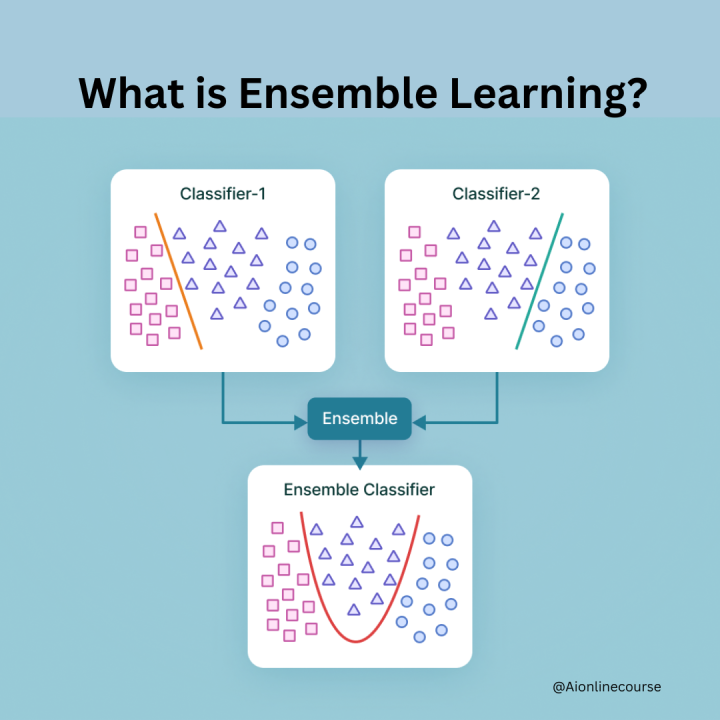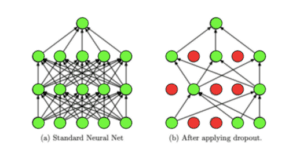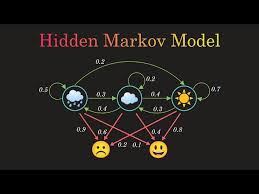A Brief History: Who Developed It?
Ensemble learning began evolving in the 1990s, with researchers like Leo Breiman (bagging) and Yoav Freund and Robert Schapire (boosting) laying its foundations. These methods revolutionised machine learning by combining predictions from multiple models, boosting accuracy and robustness in data analysis.
What Is Ensemble Learning?
Imagine solving a puzzle with friends, where each person contributes a piece of the solution based on their strengths. Ensemble learning mimics this collaboration by combining predictions from multiple models, creating a stronger and more accurate overall prediction. It’s a cornerstone technique in modern machine learning.

Why Is Ensemble Learning Used?
Ensemble learning addresses critical machine learning challenges:
- Improving Predictive Accuracy: Combines outputs from diverse models to enhance precision.
- Reducing Overfitting: Averages errors, minimising variance and bias.
- Handling Complex Data Patterns: Captures nuanced relationships often missed by individual models.
Without ensemble learning, predictive models often fail to achieve high accuracy or reliability in real-world scenarios.
How Is Ensemble Learning Used?
Ensemble learning typically follows these steps:
- Train Multiple Base Models: Train models such as decision trees or logistic regression on the dataset.
- Combine Their Predictions: Use methods like averaging, majority voting, or stacking to aggregate results.
- Test the Ensemble Model: Validate its performance using metrics like precision, recall, and accuracy.
Tools like Scikit-learn and XGBoost simplify ensemble implementation, making it accessible for beginners and experienced practitioners alike.
Different Types of Ensemble Learning
Ensemble learning employs various techniques to suit different datasets and problems:
- Bagging: Builds independent models and aggregates results (e.g., Random Forests).
- Boosting: Sequentially refines models to correct errors (e.g., AdaBoost, Gradient Boosting).
- Stacking: Combines outputs using a meta-model for improved accuracy.
These approaches offer flexibility and adaptability, ensuring optimal performance across diverse scenarios.
Key Features of Ensemble Learning
Ensemble learning is defined by the following features:
- Diversity: Leverages diverse models for comprehensive insights.
- Scalability: Handles small and large datasets effectively.
- Resilience: Reduces the impact of outlier errors from individual models.
Popular Tools for Ensemble Learning
Several tools provide robust implementations for ensemble learning:
- Scikit-learn (Python): Offers BaggingClassifier, AdaBoost, Random Forests, and more.
- XGBoost: Optimised for gradient boosting, delivering speed and efficiency for large datasets.
- H2O.ai: A scalable platform supporting distributed machine learning with ensemble methods.
Applications of Ensemble Learning in Australian Government Agencies
Ensemble learning is transforming decision-making across Australian sectors:
- Healthcare Data Forecasting:
- Application: Predicting patient admission rates to optimise resource allocation.
- Traffic Management:
- Application: Clustering and forecasting traffic flow to improve infrastructure planning.
- Education Analytics:
- Application: Using ensemble models to predict student performance for customised interventions.
Conclusion
Ensemble learning has revolutionised machine learning by combining multiple models to improve predictive accuracy, reduce overfitting, and manage complex data patterns. Its versatility makes it a valuable tool in fields like healthcare, traffic management, and education. With advanced tools like Scikit-learn and XGBoost, ensemble learning is accessible and impactful for solving real-world problems.
How interested are you in uncovering even more about this topic? Our next article dives deeper into [insert next topic], unravelling insights you won’t want to miss. Stay curious and take the next step with us!








